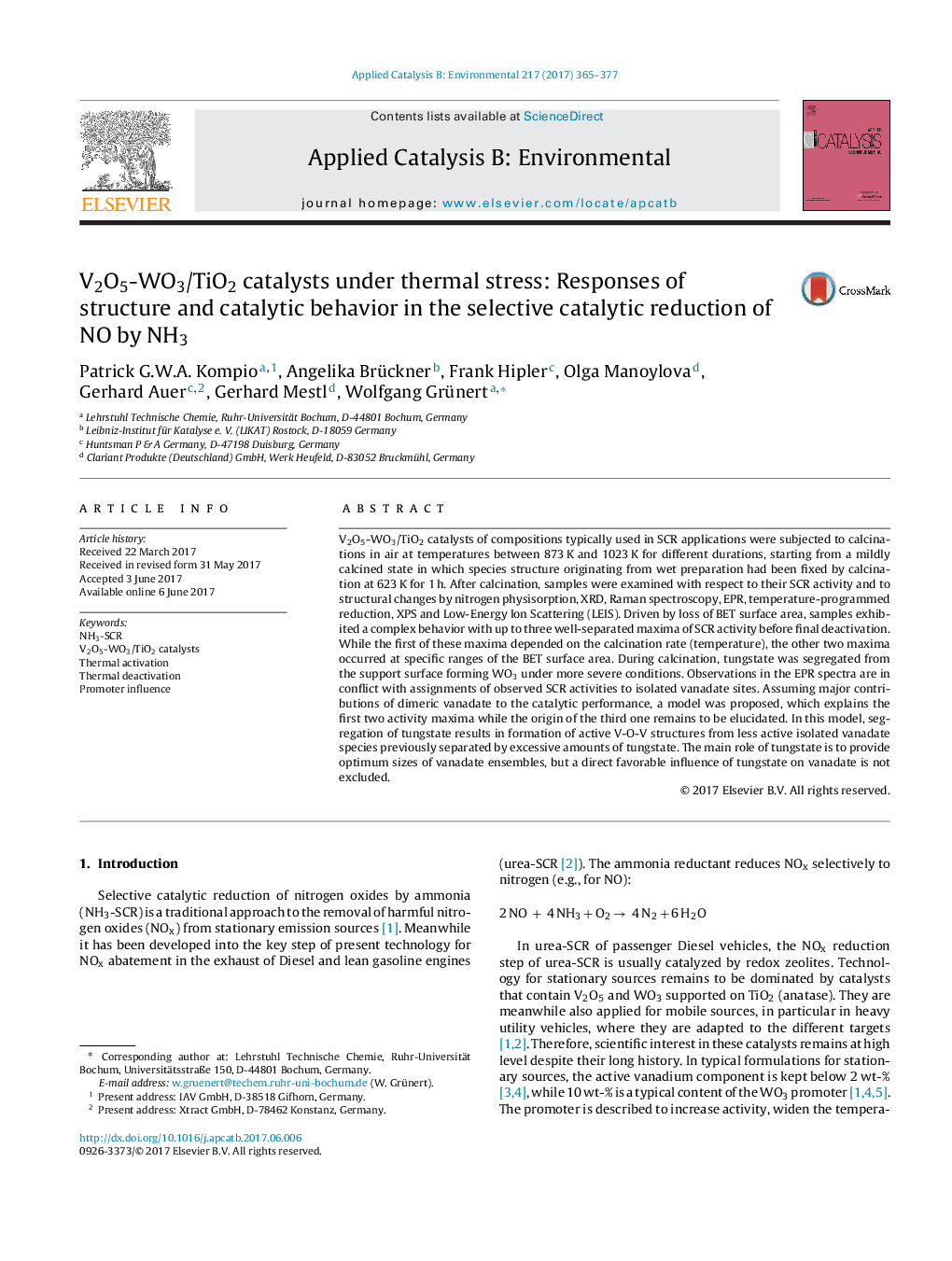| کد مقاله | کد نشریه | سال انتشار | مقاله انگلیسی | نسخه تمام متن |
|---|---|---|---|---|
| 6453980 | 1418803 | 2017 | 13 صفحه PDF | دانلود رایگان |

- Up to 3 maxima of SCR activity occur during thermal treatment of V-W/TiO2 catalysts.
- At given V and W contents, 2nd and 3rd maxima are determined by BET surface area.
- 1st activity peak most pronounced at high calcination rates.
- 1st and 2nd maxima due to preferential WOx segregation causing increased abundance of V-O-V sites.
V2O5-WO3/TiO2 catalysts of compositions typically used in SCR applications were subjected to calcinations in air at temperatures between 873Â K and 1023Â K for different durations, starting from a mildly calcined state in which species structure originating from wet preparation had been fixed by calcination at 623Â K for 1Â h. After calcination, samples were examined with respect to their SCR activity and to structural changes by nitrogen physisorption, XRD, Raman spectroscopy, EPR, temperature-programmed reduction, XPS and Low-Energy Ion Scattering (LEIS). Driven by loss of BET surface area, samples exhibited a complex behavior with up to three well-separated maxima of SCR activity before final deactivation. While the first of these maxima depended on the calcination rate (temperature), the other two maxima occurred at specific ranges of the BET surface area. During calcination, tungstate was segregated from the support surface forming WO3 under more severe conditions. Observations in the EPR spectra are in conflict with assignments of observed SCR activities to isolated vanadate sites. Assuming major contributions of dimeric vanadate to the catalytic performance, a model was proposed, which explains the first two activity maxima while the origin of the third one remains to be elucidated. In this model, segregation of tungstate results in formation of active V-O-V structures from less active isolated vanadate species previously separated by excessive amounts of tungstate. The main role of tungstate is to provide optimum sizes of vanadate ensembles, but a direct favorable influence of tungstate on vanadate is not excluded.
NO conversion curves after calcination at 1023 K for different times.155
Journal: Applied Catalysis B: Environmental - Volume 217, 15 November 2017, Pages 365-377